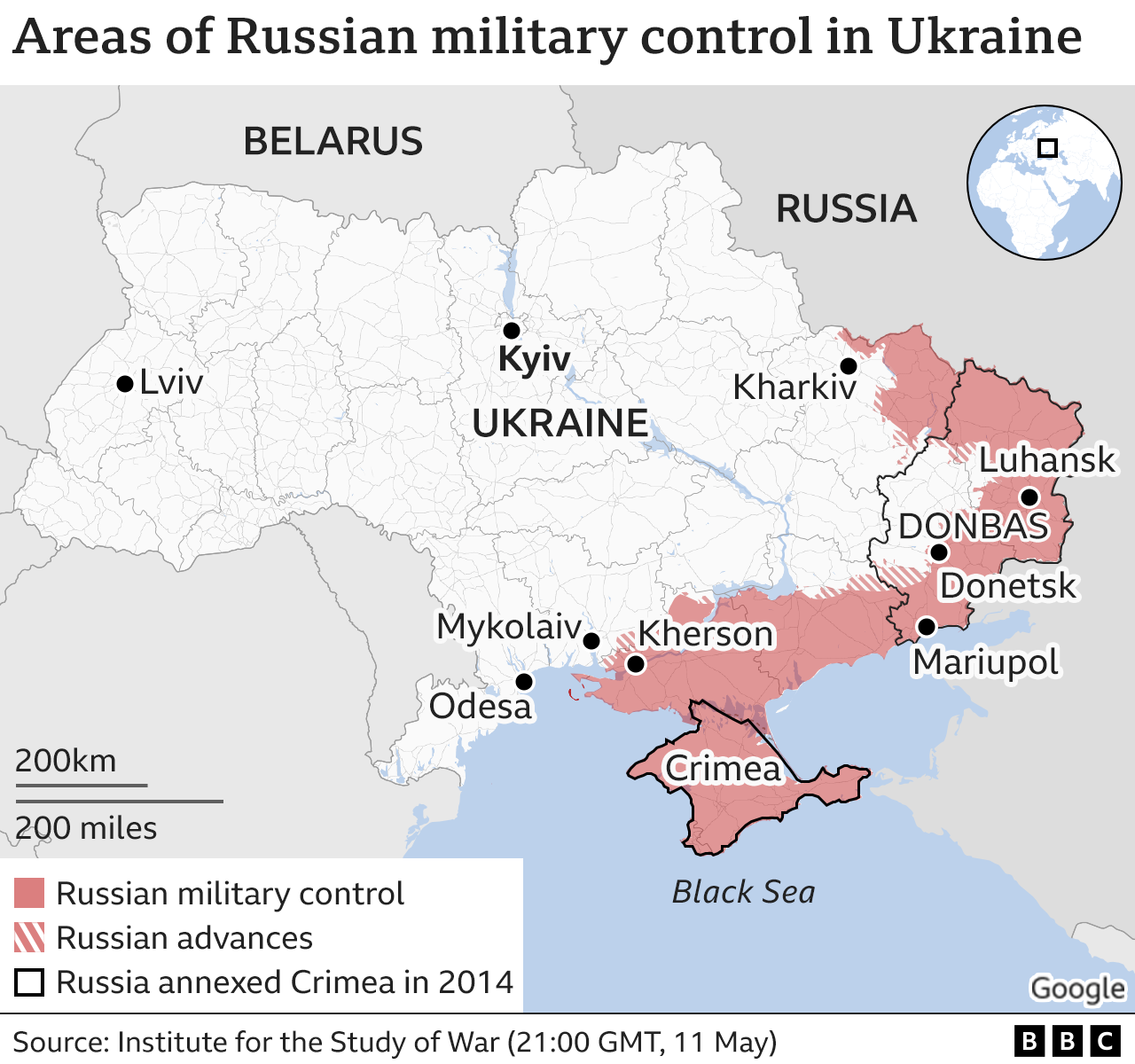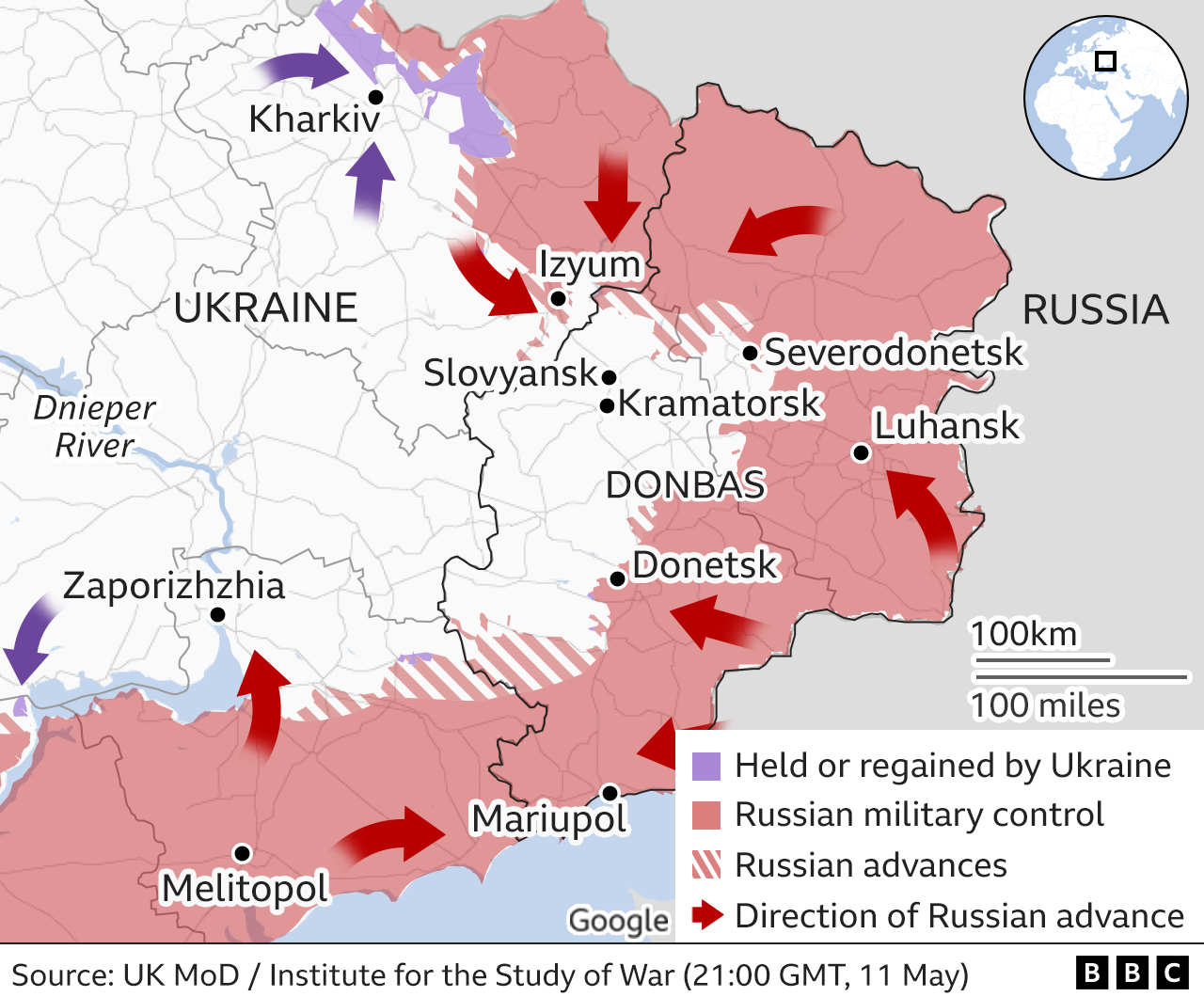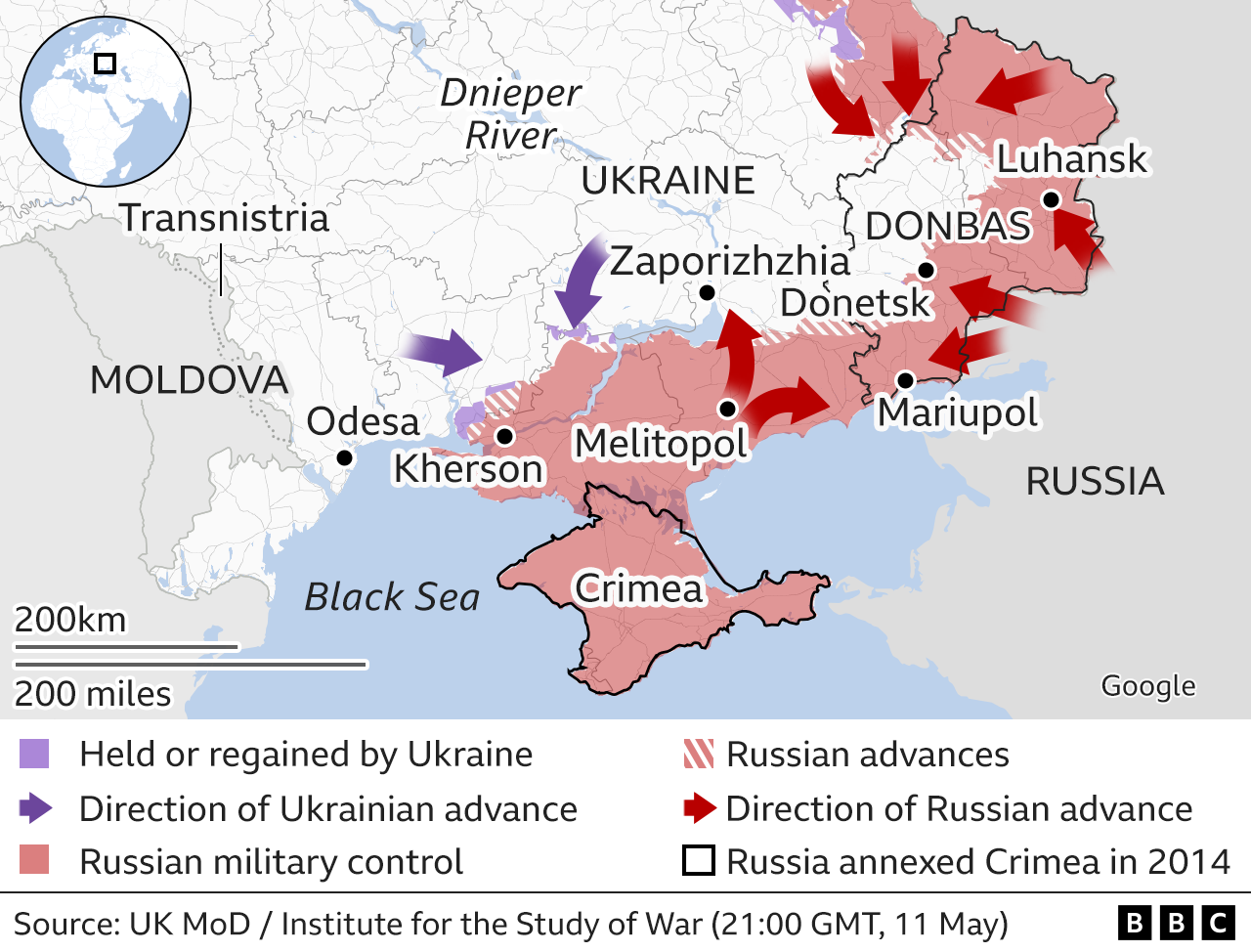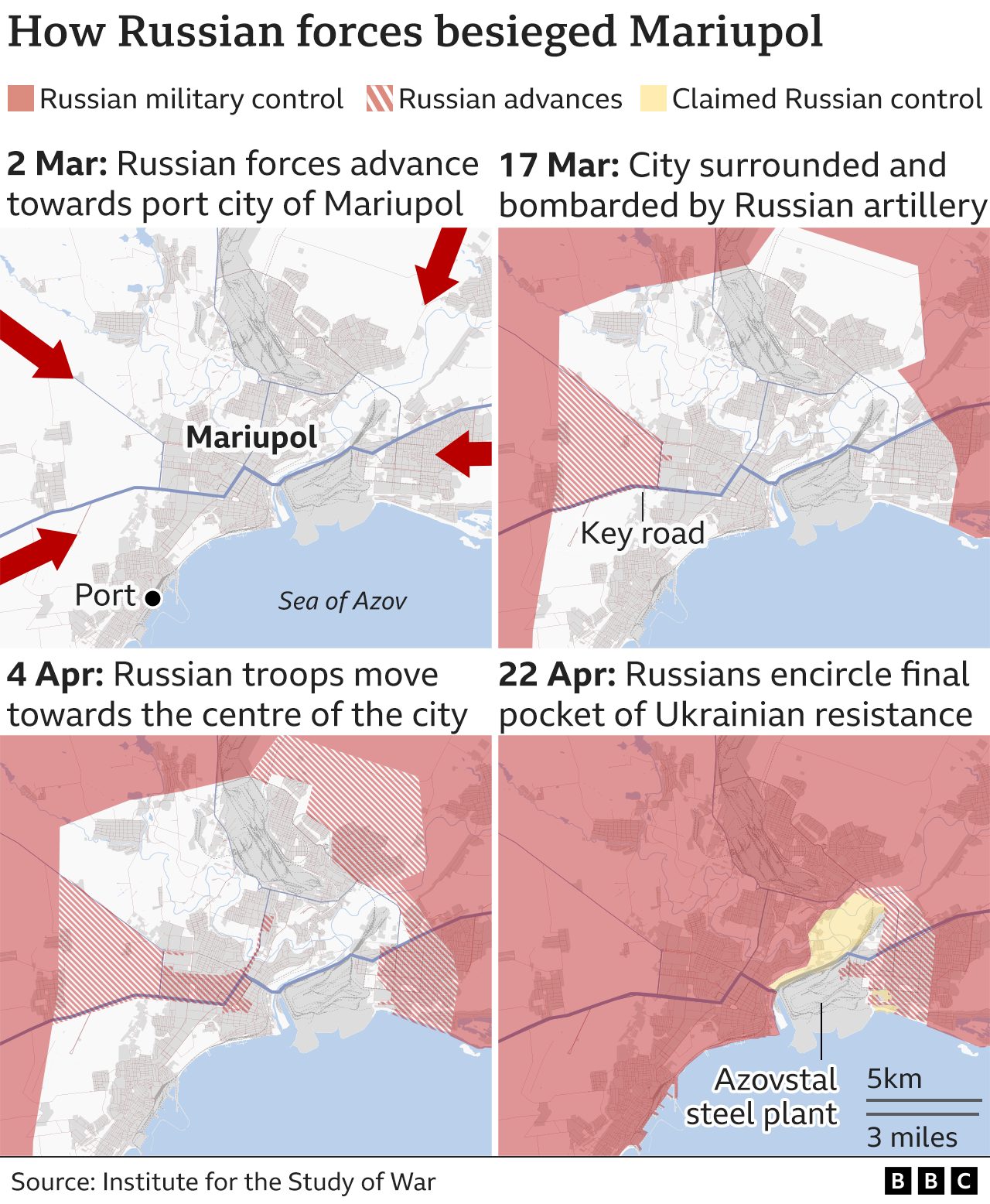BBC News 12 May 2022 - by the Visual Journalism Team
Russian forces are continuing to focus their attacks on the east of the country but resistance from Ukrainian troops is slowing their progress.
Here are the latest developments:
Russia invaded Ukraine on 24 February, but Ukrainian forces retook large areas around the capital Kyiv in early April after Russia abandoned its push towards Kyiv.
Following its withdrawal from the north of Ukraine, Russia has refocused its efforts on taking control of the east and south of the country.
Russians regrouping in the east
Russian officials have said its forces are fighting for the "complete liberation" of the Donbas, which broadly refers to Ukraine's eastern regions of Donetsk and Luhansk, where Russian-backed separatists held significant territory before the invasion.
Russian forces appear to have stalled to the south of Izyum and are now regrouping, according to the Institute for the Study of War (ISW), with Ukrainian troops managing to repel recent attempted advances.
Ukrainian defences in the region have been in place since fighting began there in 2014 and the UK Ministry of Defence (MoD) says Russian forces have failed to build much momentum.
A successful recent counteroffensive by Ukrainian forces around the city of Kharkiv, to the north west of Izyum, has advanced towards the border with Russia and pushed some Russian artillery out of range of the city, according to the ISW. This will likely force Russia to reinforce its positions in the region to protect supply lines, slowing offensive operations elsewhere.
The UK MoD has called the withdrawal of Russian forces from around Kharkiv a "tacit recognition" of Russia's inability to capture key Ukrainian cities.
Russia targets full control of south
Russian forces initially made rapid gains in the south, with their main objective being the creation of a land corridor between Crimea, which it annexed in 2014, and areas held by Russian-backed separatists in Donetsk and Luhansk.
But strong resistance from Ukrainian forces near Mykolaiv in the west and in Mariupol in the east significantly slowed Russian advances.
The port city of Mariupol, which has been encircled since the start of March, is now mostly under the control of Russian forces.
Several hundred Ukrainian troops remain holed up in the Azovstal metal works factory in the south of the city, with Russian forces continuing attempts to take control of the sprawling industrial complex.
To the west, Russia had aimed to take control of Odesa and cut off Ukraine's access to the Black Sea, but its forces were blocked by a staunch defence in Mykolaiv and forced back south towards Kherson by a Ukrainian counteroffensive in March.
Russian forces are now regrouping in the area in an effort to resume attacks towards Mykolaiv, according to the ISW.
Russia is continuing efforts to reinforce its troops on Snake Island in the Black Sea. The roughly 16-hectare (40-acre) rocky outpost is owned by Ukraine but was taken over by Russian forces in February.
These efforts have stalled as Ukrainian forces have struck Russian air defences on the island and resupply vessels, according to the MoD, which have become more exposed following the sinking of the Russian flagship Moskva in April.
There have been a series of recent explosions in Transnistria, a breakaway part of Moldova where Russian troops are already based, which Russian-backed local officials have blamed on Ukraine.
However, Ukraine has claimed these are so-called "false flag" operations - an attempt by Russia to destabilise the region and spread the conflict.
By David Brown, Bella Hurrell, Dominic Bailey, Mike Hills, Lucy Rodgers, Paul Sargeant, Alison Trowsdale, Tural Ahmedzade, Mark Bryson, Zoe Bartholomew, Sean Willmott, Sana Dionysiou, Joy Roxas, Gerry Fletcher, Jana Tauschinsk, Debie Loizou and Prina Shah.
About these maps
To indicate which parts of Ukraine are under control by Russian troops we are using daily assessments published by the Institute for the Study of War with the American Enterprise Institute's Critical Threats Project.
To show key areas where advances are taking place we are also using daily updates from the UK Ministry of Defence and BBC research.
The situation in Ukraine is fast moving and it is likely there will be times when there have been changes not reflected in the maps.





